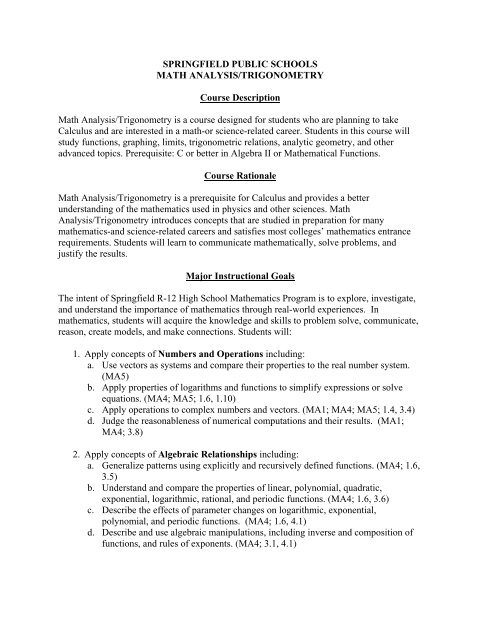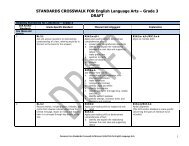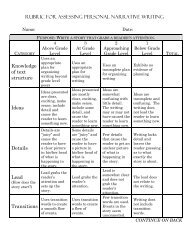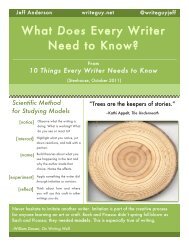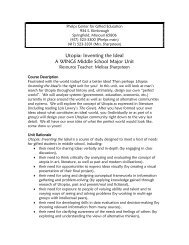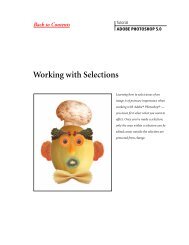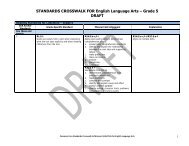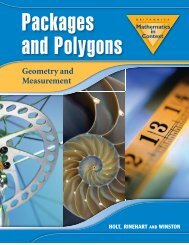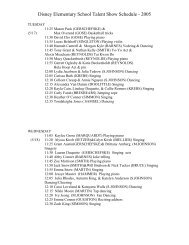Mathematical Analysis and Trigonometry - iShareSPS
Mathematical Analysis and Trigonometry - iShareSPS
Mathematical Analysis and Trigonometry - iShareSPS
Create successful ePaper yourself
Turn your PDF publications into a flip-book with our unique Google optimized e-Paper software.
SPRINGFIELD PUBLIC SCHOOLS<br />
MATH ANALYSIS/TRIGONOMETRY<br />
Course Description<br />
Math <strong>Analysis</strong>/<strong>Trigonometry</strong> is a course designed for students who are planning to take<br />
Calculus <strong>and</strong> are interested in a math-or science-related career. Students in this course will<br />
study functions, graphing, limits, trigonometric relations, analytic geometry, <strong>and</strong> other<br />
advanced topics. Prerequisite: C or better in Algebra II or <strong>Mathematical</strong> Functions.<br />
Course Rationale<br />
Math <strong>Analysis</strong>/<strong>Trigonometry</strong> is a prerequisite for Calculus <strong>and</strong> provides a better<br />
underst<strong>and</strong>ing of the mathematics used in physics <strong>and</strong> other sciences. Math<br />
<strong>Analysis</strong>/<strong>Trigonometry</strong> introduces concepts that are studied in preparation for many<br />
mathematics-<strong>and</strong> science-related careers <strong>and</strong> satisfies most colleges’ mathematics entrance<br />
requirements. Students will learn to communicate mathematically, solve problems, <strong>and</strong><br />
justify the results.<br />
Major Instructional Goals<br />
The intent of Springfield R-12 High School Mathematics Program is to explore, investigate,<br />
<strong>and</strong> underst<strong>and</strong> the importance of mathematics through real-world experiences. In<br />
mathematics, students will acquire the knowledge <strong>and</strong> skills to problem solve, communicate,<br />
reason, create models, <strong>and</strong> make connections. Students will:<br />
1. Apply concepts of Numbers <strong>and</strong> Operations including:<br />
a. Use vectors as systems <strong>and</strong> compare their properties to the real number system.<br />
(MA5)<br />
b. Apply properties of logarithms <strong>and</strong> functions to simplify expressions or solve<br />
equations. (MA4; MA5; 1.6, 1.10)<br />
c. Apply operations to complex numbers <strong>and</strong> vectors. (MA1; MA4; MA5; 1.4, 3.4)<br />
d. Judge the reasonableness of numerical computations <strong>and</strong> their results. (MA1;<br />
MA4; 3.8)<br />
2. Apply concepts of Algebraic Relationships including:<br />
a. Generalize patterns using explicitly <strong>and</strong> recursively defined functions. (MA4; 1.6,<br />
3.5)<br />
b. Underst<strong>and</strong> <strong>and</strong> compare the properties of linear, polynomial, quadratic,<br />
exponential, logarithmic, rational, <strong>and</strong> periodic functions. (MA4; 1.6, 3.6)<br />
c. Describe the effects of parameter changes on logarithmic, exponential,<br />
polynomial, <strong>and</strong> periodic functions. (MA4; 1.6, 4.1)<br />
d. Describe <strong>and</strong> use algebraic manipulations, including inverse <strong>and</strong> composition of<br />
functions, <strong>and</strong> rules of exponents. (MA4; 3.1, 4.1)
e. Use, solve, <strong>and</strong> analyze equivalent forms of equalities <strong>and</strong> inequalities<br />
(exponential, logarithmic, rational, polynomial, <strong>and</strong> trigonometric). (MA4; 1.6,<br />
3.4, 4.1)<br />
f. Analyze trigonometric identities <strong>and</strong> use them to simplify trigonometric<br />
expressions <strong>and</strong> solve trigonometric equations. (MA4; 3.1)<br />
g. Examine the limiting process <strong>and</strong> calculate limits of functions. (MA4; 1.6)<br />
3. Apply concepts of Geometric <strong>and</strong> Spatial Relationships including:<br />
a. Use trigonometric relationships to determine lengths <strong>and</strong> angle measures in all<br />
types of triangles. (MA2; 1.6, 1.10)<br />
b. Use vectors to represent <strong>and</strong> analyze problems involving velocity <strong>and</strong> directions.<br />
(MA2; 3.6, 4.1)<br />
c. Use Cartesian coordinates <strong>and</strong> other coordinate systems to analyze geometric<br />
situations, such as navigational, polar, or spherical systems. (MA2; 3.6, 4.1)<br />
d. Perform simple transformations <strong>and</strong> their compositions on linear, quadratic,<br />
logarithmic, exponential, rational, <strong>and</strong> periodic functions. (MA4; 3.1)<br />
e. Draw or use visual models, including three-dimensional objects, to represent <strong>and</strong><br />
solve problems. (MA2; 1.4, 3.1, 3.6)<br />
f. Examine <strong>and</strong> apply trigonometric functions through definitions <strong>and</strong> problemsolving.<br />
(MA2; 1.6, 3.2)<br />
4. Apply concepts of Measurement including:<br />
a. Compare <strong>and</strong> contrast angle <strong>and</strong> radian measure. (MA2; 3.1)<br />
b. Apply concepts of upper <strong>and</strong> lower bounds <strong>and</strong> limits in measurement situations.<br />
(MA2; 1.6, 3.4)<br />
5. Apply concepts of Data <strong>and</strong> Probability including:<br />
a. Create a scatterplot, describe its shape, determine <strong>and</strong> analyze regression<br />
equations using technological tools. (MA3; 1.4, 1.6)


